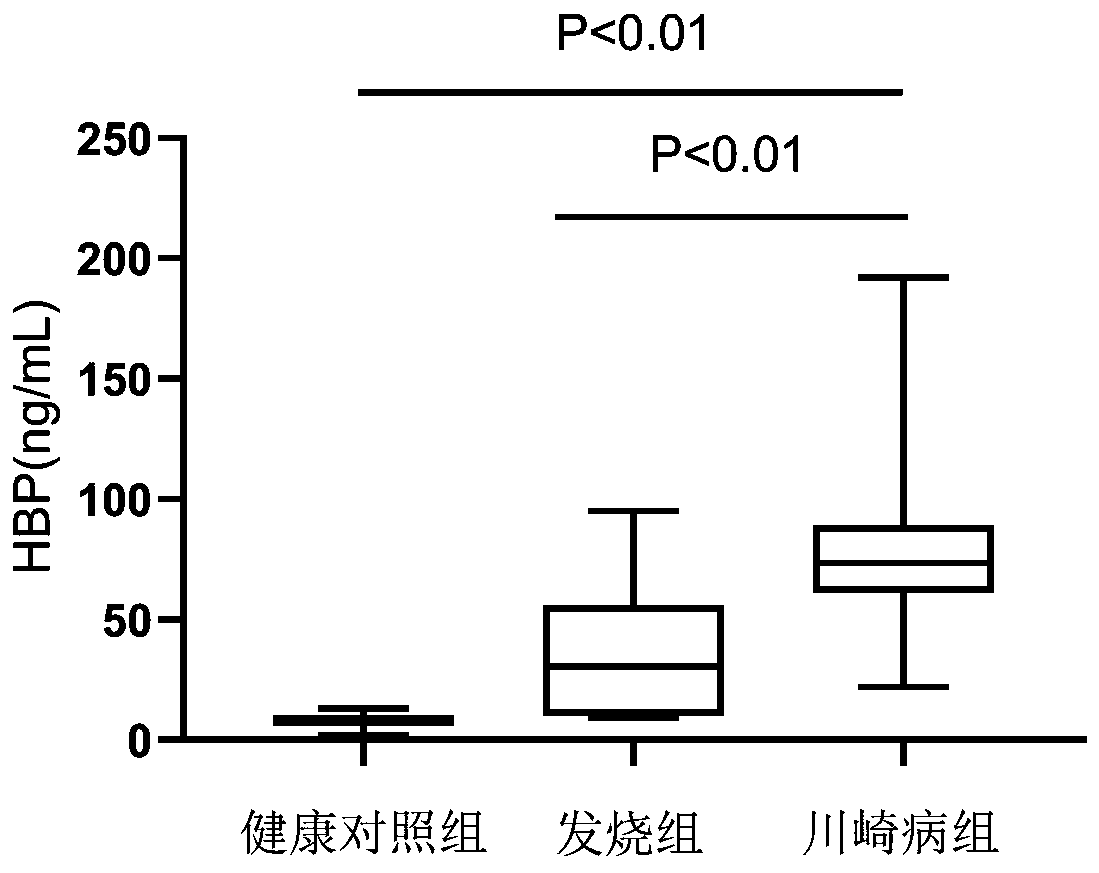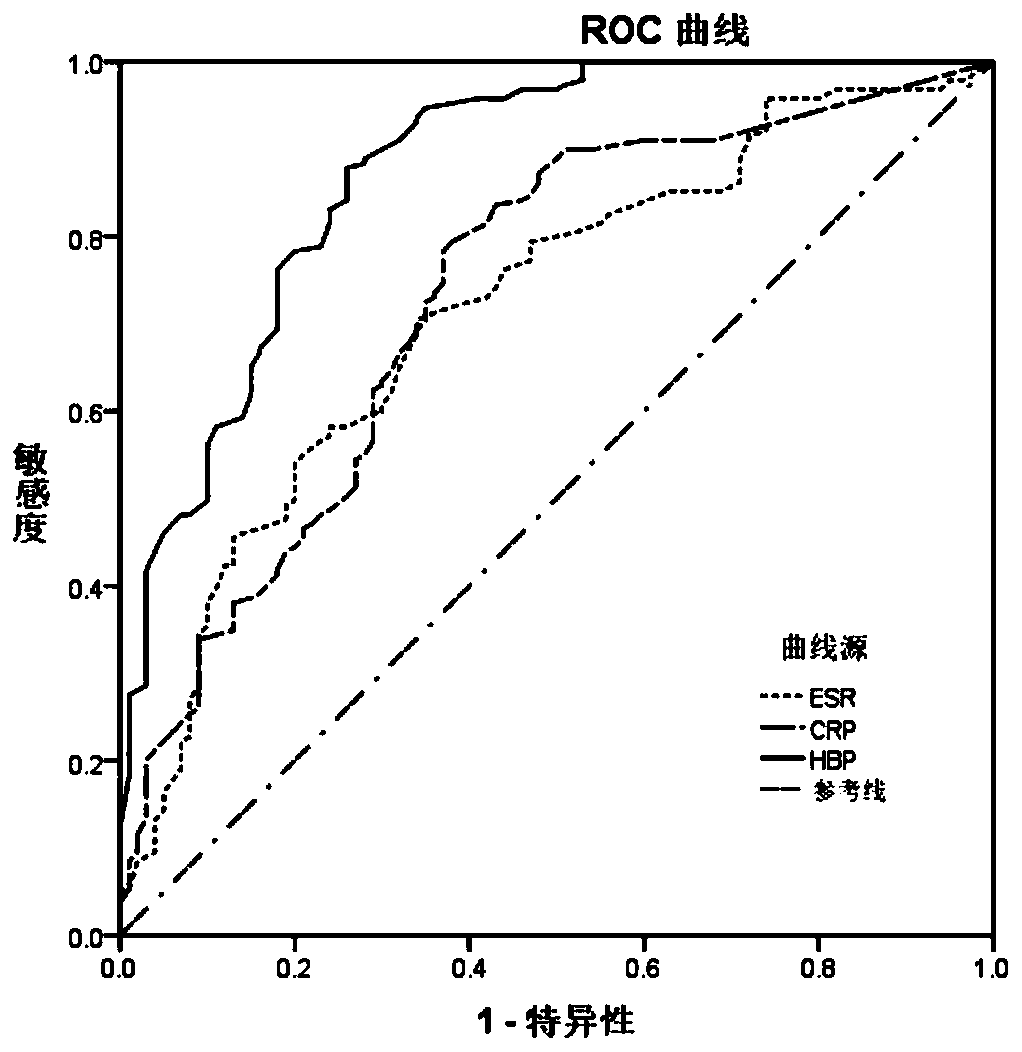Application of HBP protein as diagnostic marker of Kawasaki disease
A technology for diagnosing markers and Kawasaki disease, applied in the field of plasma protein markers, to achieve the effects of good sensitivity, high accuracy and high sensitivity
- Summary
- Abstract
- Description
- Claims
- Application Information
AI Technical Summary
Problems solved by technology
Method used
Image
Examples
Embodiment 1
[0053] Example 1: Patients with Kawasaki disease have higher plasma HBP levels in the acute phase
[0054] The detection results of HBP expression level in the plasma samples of healthy control group, fever group and Kawasaki disease group: the relative expression level of HBP in the control group was 7.6±2.7ng / mL, that of the fever group was 33.8±24.8ng / mL, and that of the Kawasaki disease group was 7.6±2.7ng / mL. Group was 77.1 ± 27.7 ng / mL. Statistical analysis was carried out on the relative expression levels of HBP in the samples of each group, and it was found that there were significant differences in plasma HBP between the normal group VS Kawasaki disease group, the fever group VS Kawasaki disease group (pfigure 1 ).
[0055] Taking the fever group as the control group and the Kawasaki disease group as the disease group, ROC curve analysis was performed on the relative expression levels of HBP, ESR, and CRP, and the AUC values were HBP=0.88, ESR=0.73, and CRP=0.73. T...
Embodiment 2
[0057] Example 2: The plasma HBP level of patients with Kawasaki disease is significantly elevated in patients with gamma globulin non-responsive Kawasaki disease.
[0058] The detection results of HBP expression level in the plasma samples of the gamma globulin reaction Kawasaki disease group and non-reaction group: the relative expression level of HBP in the gamma globulin reaction Kawasaki disease group was 74.3±26.2 ng / mL as the mean ± standard deviation, and 74.3 ± 26.2 ng / mL in the non-reactive group. The response group was 94.7±30.6 ng / mL. Plasma HBP was significantly different between gamma globulin reactive Kawasaki disease group and non-responsive group (p image 3 ), its Cutoff value is 98.5ng / mL.
Embodiment 3
[0059] Example 3: The level of plasma HBP in patients with Kawasaki disease is significantly increased in patients with coronary artery injury in Kawasaki disease.
[0060] The detection results of HBP expression level in the plasma samples of the Kawasaki disease group without coronary artery injury and the Kawasaki disease group with coronary artery injury: the mean ± standard deviation of HBP in the Kawasaki disease group without coronary artery injury was 72.5±25.3, and that in the Kawasaki disease group with arterial injury was 72.5±25.3 96.4±29.3. Plasma HBP was significantly different between the Kawasaki disease group without coronary artery injury and the coronary artery injury group (p Figure 4 ), its Cutoff value is 83ng / mL.
PUM
| Property | Measurement | Unit |
|---|---|---|
| Sensitivity | aaaaa | aaaaa |
| Sensitivity | aaaaa | aaaaa |
Abstract
Description
Claims
Application Information
 Login to View More
Login to View More - R&D
- Intellectual Property
- Life Sciences
- Materials
- Tech Scout
- Unparalleled Data Quality
- Higher Quality Content
- 60% Fewer Hallucinations
Browse by: Latest US Patents, China's latest patents, Technical Efficacy Thesaurus, Application Domain, Technology Topic, Popular Technical Reports.
© 2025 PatSnap. All rights reserved.Legal|Privacy policy|Modern Slavery Act Transparency Statement|Sitemap|About US| Contact US: help@patsnap.com



